Matching ad copy to your landing page is old news, but here’s a secret not many mention: your landing page URLs need love too.
Landing page optimization is a sure-shot way to increase your chances of high-quality leads. While design and copy rightfully seize the spotlight, integral elements such as landing page URLs and compliance are often ignored. After nearly a decade of building landing pages, Apexure is here to share a secret—these seemingly small details matter. Landing page URLs offer clarity not just to you but to your audience and even search engines.
In this blog post, we’re diving deep into the world of landing page URLs. Why? So you can skip the headache of redirecting and optimizing later on. Let’s ensure your URLs are as fine-tuned as the rest of your landing page for higher conversions.

According to Google,
“Landing page is the webpage where people end up after they click your ad. The URL of this page is usually the same as your ad’s final URL.”
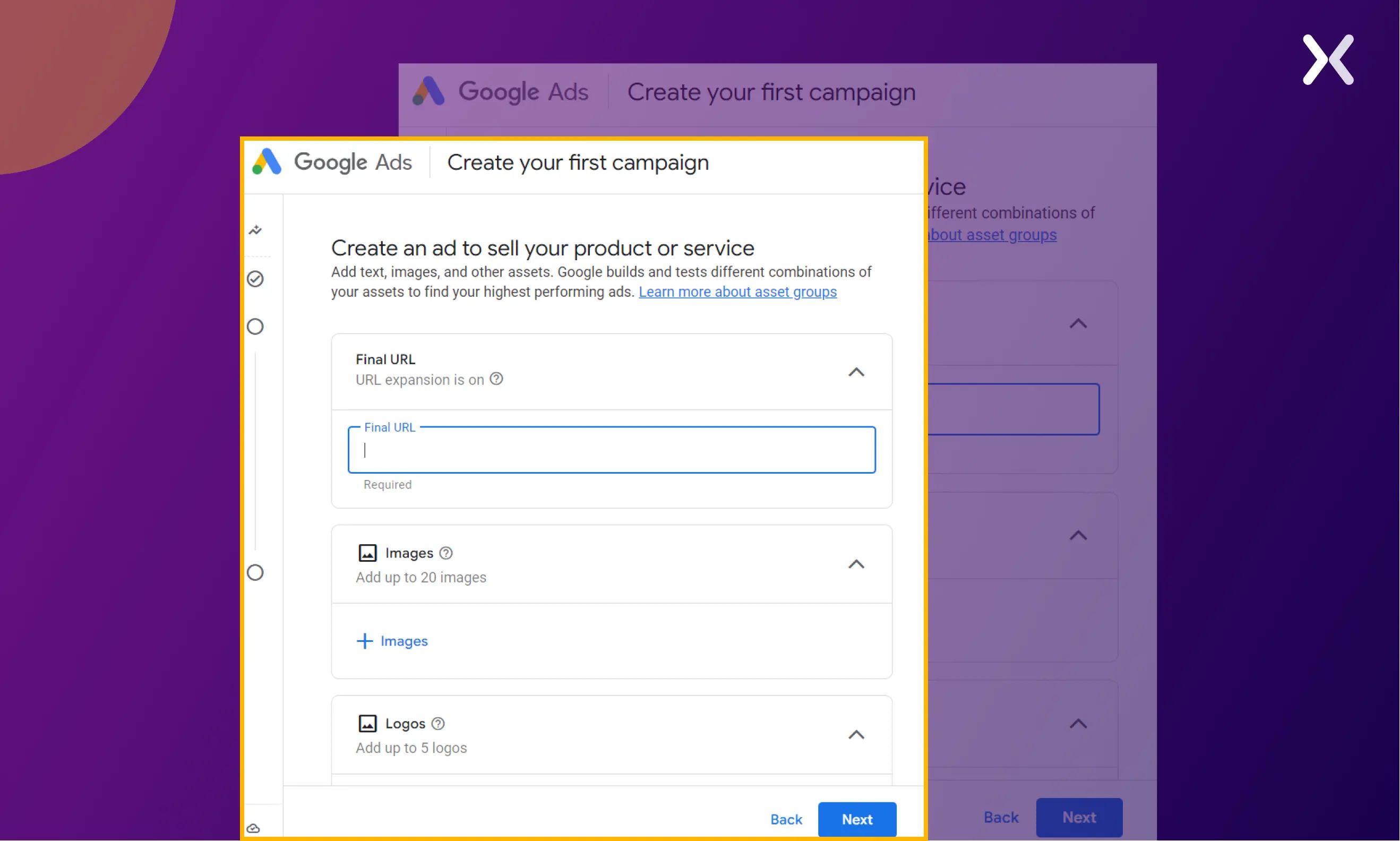
Landing page URLs are the address of the final destination you want your visitors to reach through social media or search results. Most landing page URLs use the same formula, which is:
[domain name]/[landing page name]
Sometimes marketers might include a category or campaign name in between: [domain name]/[category]/[landing page name]
For example, this search ad by WebEngage leads to the subdomain landing page URL: https://talk.webengage.com/campaign-lp/marketing-automation-platform/

Crafting an impactful landing page URL goes beyond aesthetics; it plays a pivotal role in streamlining search engine crawling and indexing processes, ultimately leading to heightened rankings and increased traffic.

A landing page URL differs from other URLs in its singular focus on guiding visitors toward a specific action or conversion. Unlike general website URLs that often lead to diverse content, a landing page URL is intentionally designed for targeted purposes, such as lead generation, sales, or appointment bookings.
Its specificity ensures a streamlined user experience and a higher likelihood of achieving the desired outcome, distinguishing it from the broader and more multifaceted nature of other URLs.
Unique landing page URLs are also easy to track through Google Analytics, Google Search Console, and A/B testing tools.

The importance of a landing page URL lies in its direct impact on user experience, search engine optimization, and the overall success of online marketing efforts. Here are vital reasons highlighting its significance:
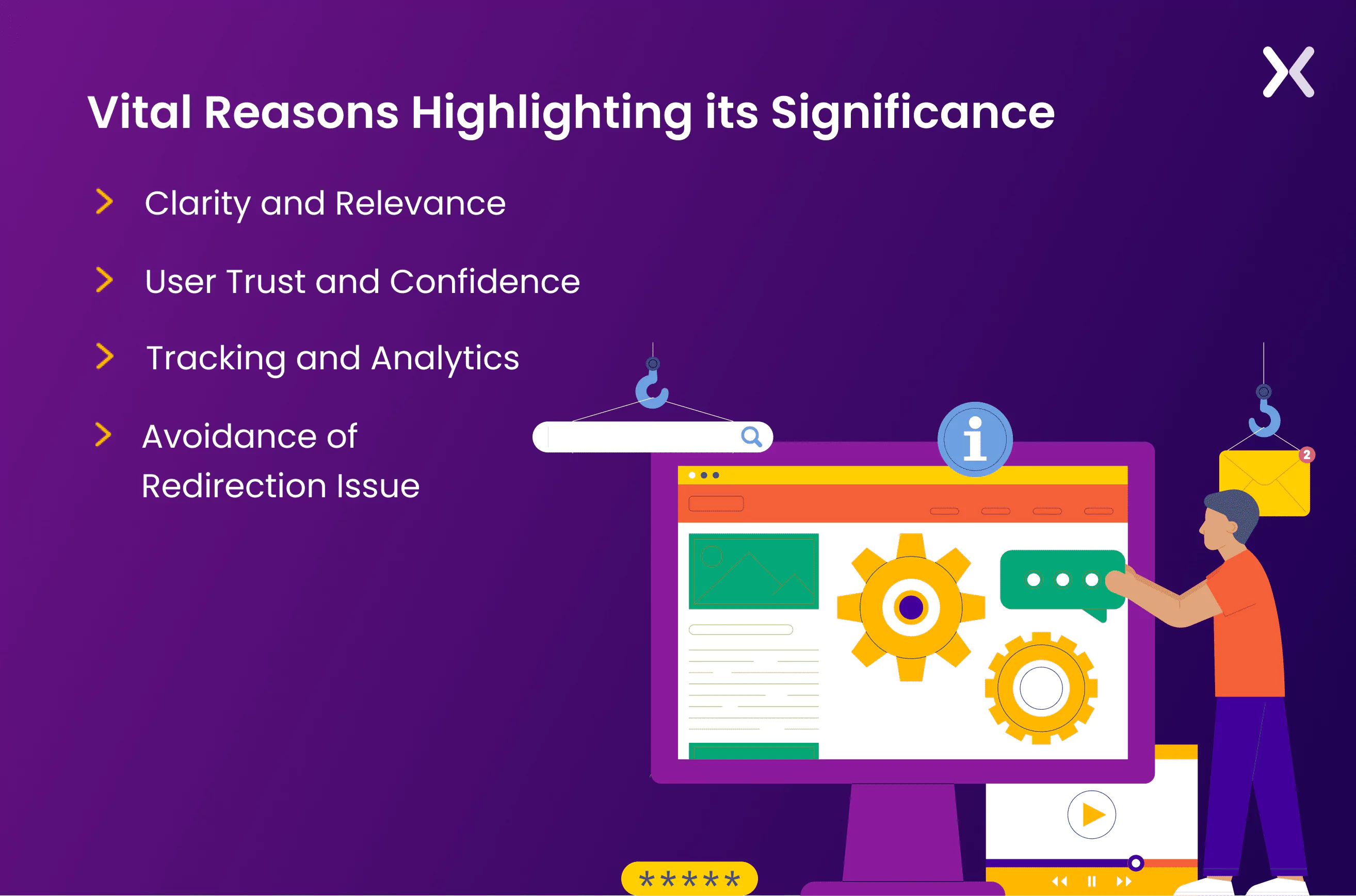
A well-crafted Landing Page URL provides visitors clarity about the page’s content and purpose. It should align seamlessly with the ad copy, ensuring relevance and a smooth transition from the ad to the post-click landing page.
A concise and relevant Landing Page URL instills trust in users. When the URL reflects the promised content and a safe network, it enhances the page’s credibility and encourages users to engage further.
Clear and well-structured Landing Page URLs facilitate effective tracking and analytics. By incorporating UTM parameters or other tracking elements, marketers can gather valuable data about user behavior, campaign performance, and conversion rates.
Well-optimized Landing Page URLs help circumvent redirection complexities. A direct and clear URL structure minimizes the need for unnecessary redirects, reducing the risk of errors, slower loading times, and potential disruptions to the user experience.
Note: Search engines prioritize user-friendly URLs. Optimizing SEO landing page URLs with relevant keywords and a clear structure improves their visibility in search engine results. It, in turn, contributes to higher rankings, increased organic traffic, and a better overall SEO strategy. So, this is a must if you use an SEO landing page.

Let’s understand the best practices for building optimized landing page URLs.
Okay, let’s be real – long and confusing URLs just seem spammy, and that’s not the vibe we want for our landing page. Keep it simple! Make sure your landing page URLs are short and clear. Put your category and campaign names in there smartly to avoid any mix-ups. It not only makes things look neat but also helps you concentrate on what matters – the main content of your page.
Now, about URL length: browsers can handle long URLs, up to 2048 characters. But here’s the catch – just because a browser is cool with it doesn’t mean search engines are. To keep things smooth for search engines, it’s smart to keep your page URLs short and sweet. It isn’t just good practice; it also keeps your online presence nice and tidy.
Here is an example of a clean URL by Rocketlane’s free trial page. Their search ad leads to a clean landing page URL.
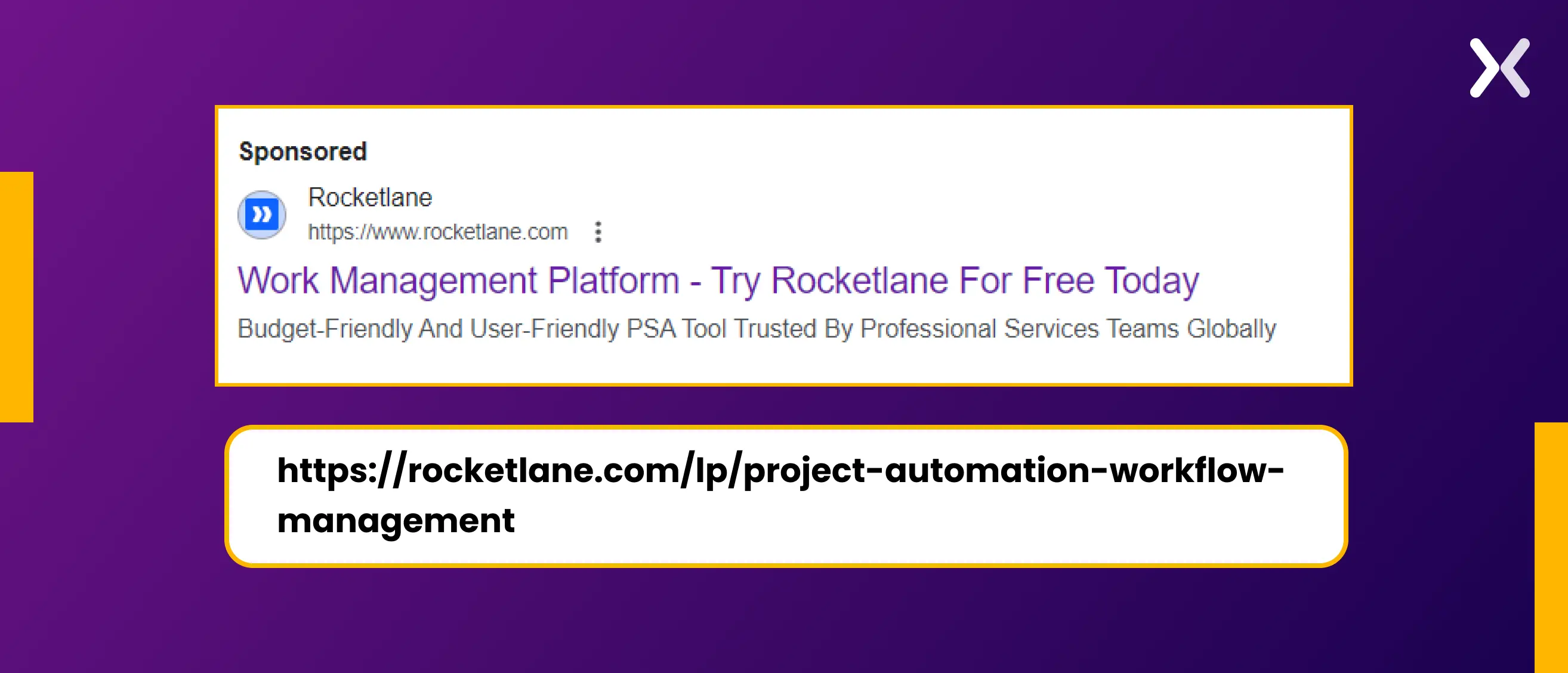
It follows the template: [domain name]/[category]/[landing page name]
Integrate relevant keywords into your landing page URL, especially if it is a local landing page, to boost its search engine optimization (SEO). Including keywords provides search engines with valuable context about your content and enhances the visibility of your landing page in search results, be it for free-trials, demos, purchase, etc.
Strategic keyword placement in the URL can attract the right audience, improving the chances of your landing page being discovered by individuals actively searching for related topics or products.
In the case of our template: [domain name]/[category]/[landing page name], the landing page name can be taken as your targeted keyword.

Tailoring your landing page URLs to specific marketing campaigns is a strategic move. By customizing URLs with UTM parameters or campaign-specific details, you can track and analyze each campaign’s performance independently. Such a level of customization provides valuable insights into user behavior and allows for more effective campaign optimization. It’s a proactive approach that empowers marketers to refine strategies based on real-time data, maximizing the impact of their efforts.
If you have an SEO landing page, we recommend using UTM parameters. UTM parameters, or Urchin Tracking Module parameters, are tags that you can add to your URL to track the effectiveness of your online marketing campaigns. These tags provide valuable information to analytics tools, helping you understand how users interact with your content.
Use this tool to build your optimized landing page link: UTM Builder.
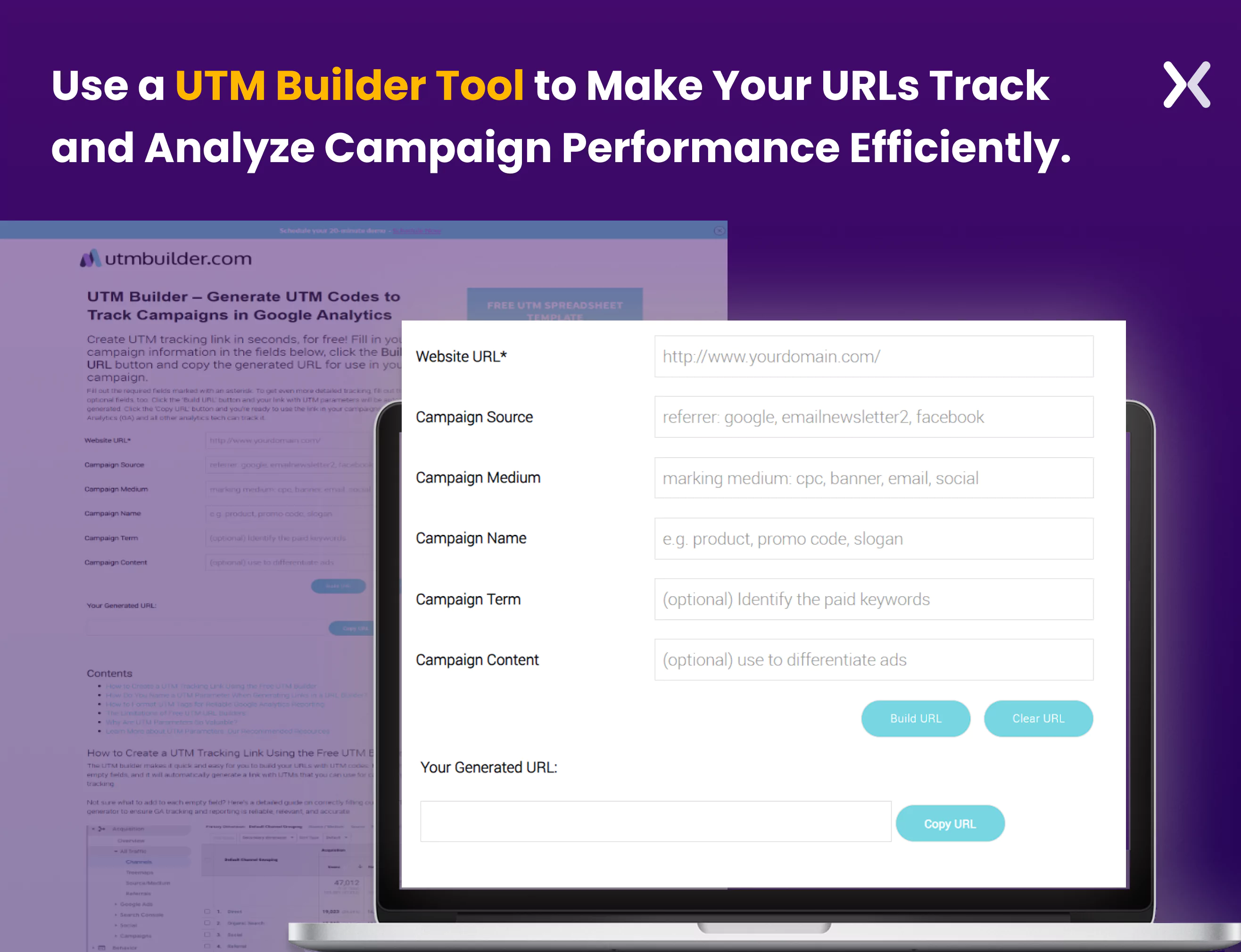
If you have a PPC landing page, you can use the UTM link as your final URL or the “tracking template” feature by Google Ads to create better tracking (you can also use both).
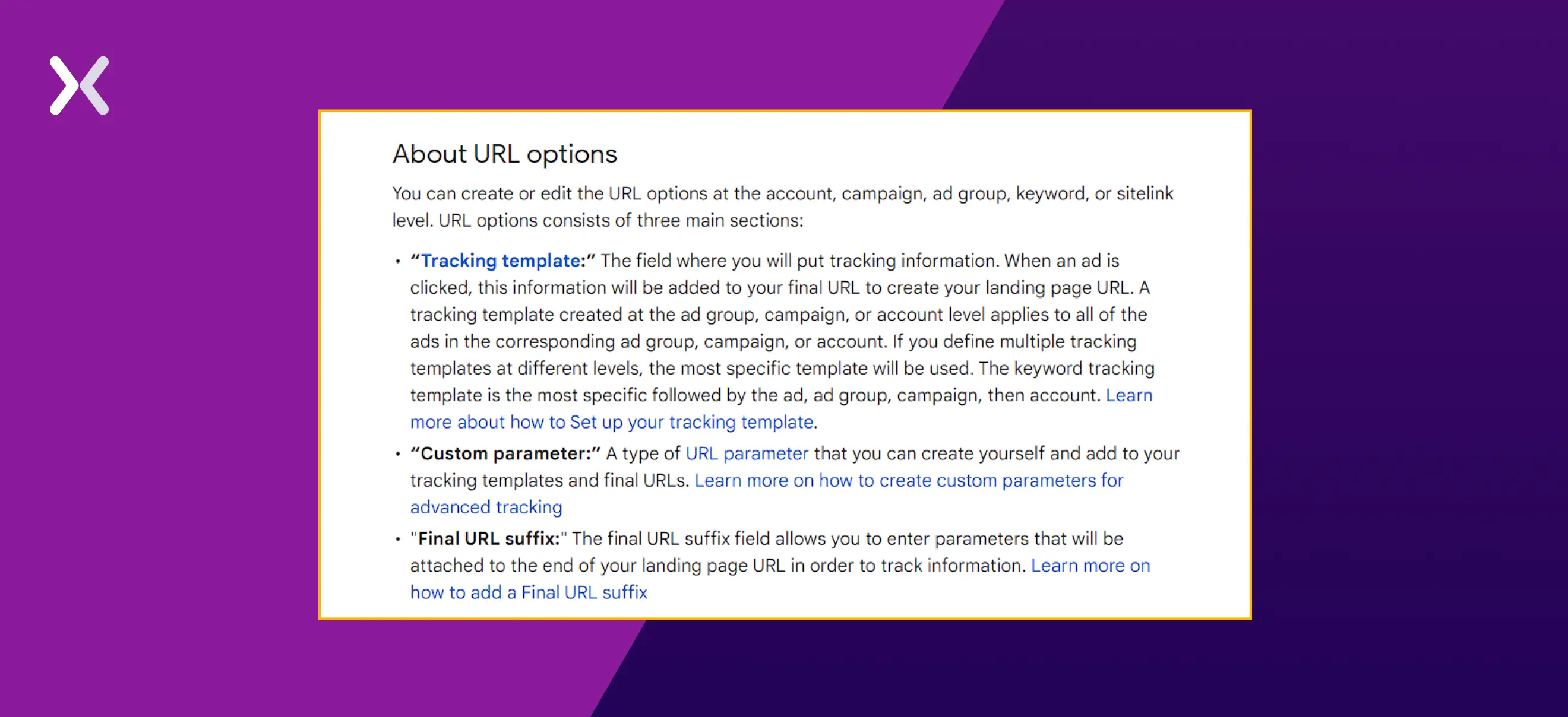
Here is an example of a landing page URL that uses both:
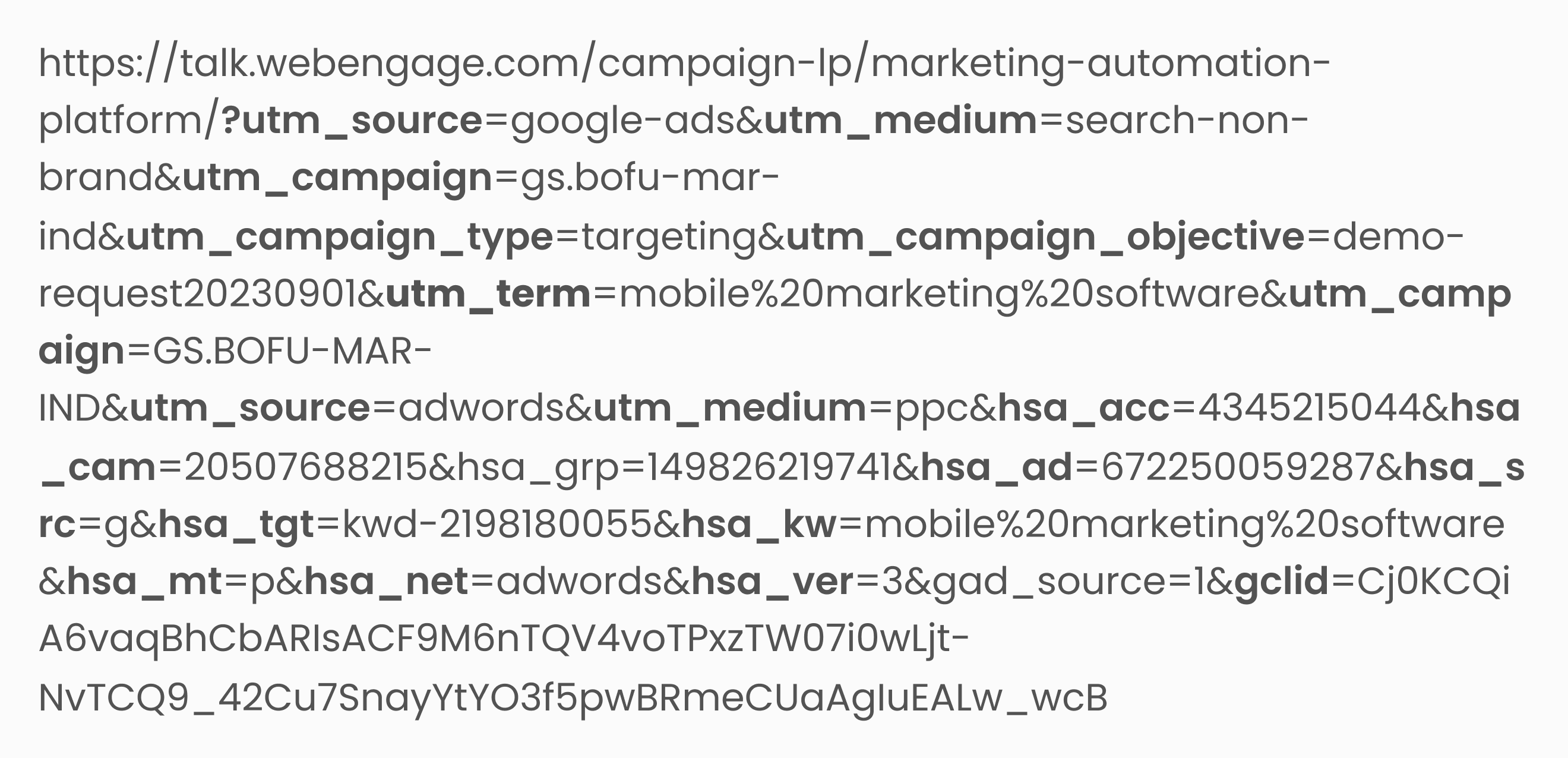
Each highlighted term corresponds to tracking specific metrics of the pages, and it’s worth noting that some of these parameters are automatically appended to the URLs by Google Ads.
To keep things simpler, we suggest using only UTMs on your links.
Generic or non-descriptive URLs can hinder the effectiveness of your landing page. A URL should preview the page’s content, guiding users and search engines alike. Avoiding generic URLs ensures visitors understand what to expect when clicking through.
Specific and descriptive URLs improve user experience and contribute to better SEO, as search engines rely on the URL to comprehend the landing page’s relevance to a user’s query.
For example,

The above ASOGrow ad goes to this landing page URL:

It looks like a generic landing page URL that tells us nothing about the page. This is what happens when you use your homepage as your landing page. Each landing page URL should be specific and clearly indicate the service it represents. The same applies to thank you pages that appear after a visitor submits a form—the URL should reflect its purpose and maintain consistency.
Here is an optimized landing page URL by Apexure: https://try.perfectsmilecompany.com/e-brush/ It signifies the kind of page the visitor will land on.
Building trust with your audience starts with your landing page URL. Ensure that the URL accurately reflects the promised content, fostering confidence in your visitors. When users see a URL that aligns with their expectations, they are more likely to proceed with the desired action, whether making a purchase or submitting their information.

Additionally, consider implementing HTTPS protocols for your landing page URLs. The ‘S’ in HTTPS stands for secure, indicating that data transmitted between the user’s browser and the website is encrypted. It safeguards user information and signals to visitors that your site prioritizes their online security. A trustworthy URL with HTTPS enhances the user experience and reinforces your brand’s reliability, establishing a positive connection with your audience.

“I’ve had campaigns where poorly structured URLs led to tracking issues, which ended up skewing the data and affecting conversion rates by 10 to 15%. Simple, clean URLs with the right UTM parameters keep everything in line, ensuring data is captured correctly.”
Including special characters in your landing page URL can pose technical challenges and negatively impact user experience. Special characters may be misinterpreted by browsers or other online platforms, leading to broken links or rendering issues.
By omitting special characters, you ensure compatibility across various devices and platforms. A clean and straightforward URL minimizes the risk of errors and provides a seamless user journey. It’s a practical step that contributes to the overall reliability and accessibility of your landing page.
So, instead of space, we encourage you to use hyphen (-) and avoid using numbers and special characters like _, @, #, etc., in your landing page URLs.

Limiting the use of unnecessary redirects is crucial for optimizing the user experience. Each redirect introduces additional loading time, potentially frustrating visitors and increasing the likelihood of abandonment. By minimizing redirections, you streamline the user’s journey from the ad click to the landing page, reducing the risk of disruptions.
It contributes to a faster and smoother experience for your audience and positively influences factors that impact search engine rankings. Prioritizing a direct path to your landing page enhances user satisfaction and overall performance. So, ensure to optimize your landing page URLs before making them live.
Here are three of the most common ways Apexure builds landing page URLs.
Think of a domain like a big house and the subdomain as a specific room or area within that house.
For example:
House (Domain): example.com
Room (Subdomain): blog.example.com
So, the blog is like a room inside the larger house (website). Each room (subdomain) can have its purpose or content, but it’s still part of the same house (domain). It helps organize things and makes it clear what each part is for.
For example, here is a landing page URL that Apexure built: https://go.ojilifelab.com/outcomes-burnout/
For the above:
Domain: https://ojilifelab.com/
Subdomain: https://go.ojilifelab.com/
Landing page on the subdomain: https://go.ojilifelab.com/outcomes-burnout/
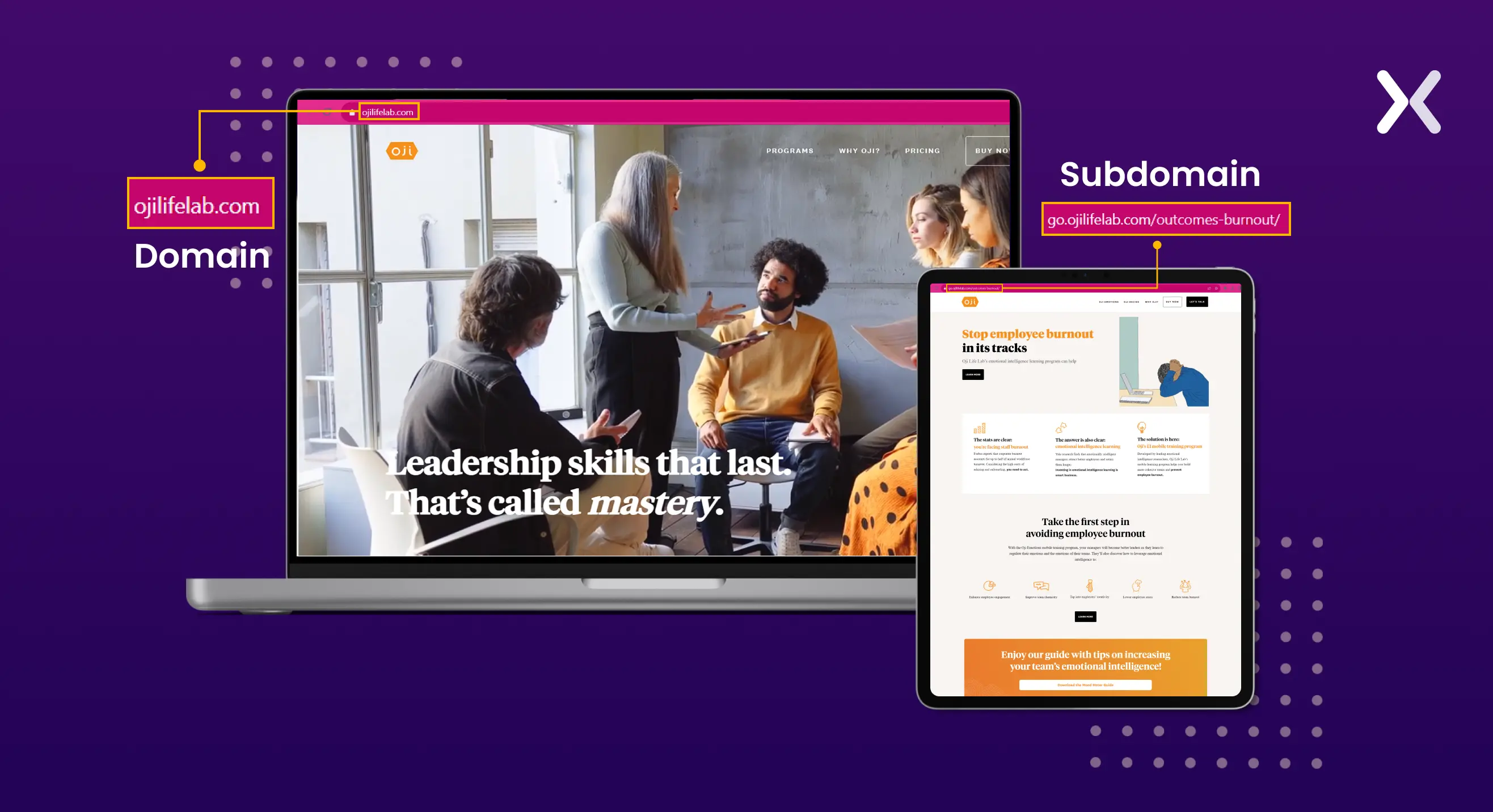
Some businesses might not want to keep their landing pages independent from their domains. For such situations, the best option is to create a landing page with a unique and simple URL.
We did the same thing for one of our clients. Here is their landing page URL: https://optionalitytrading.com/.
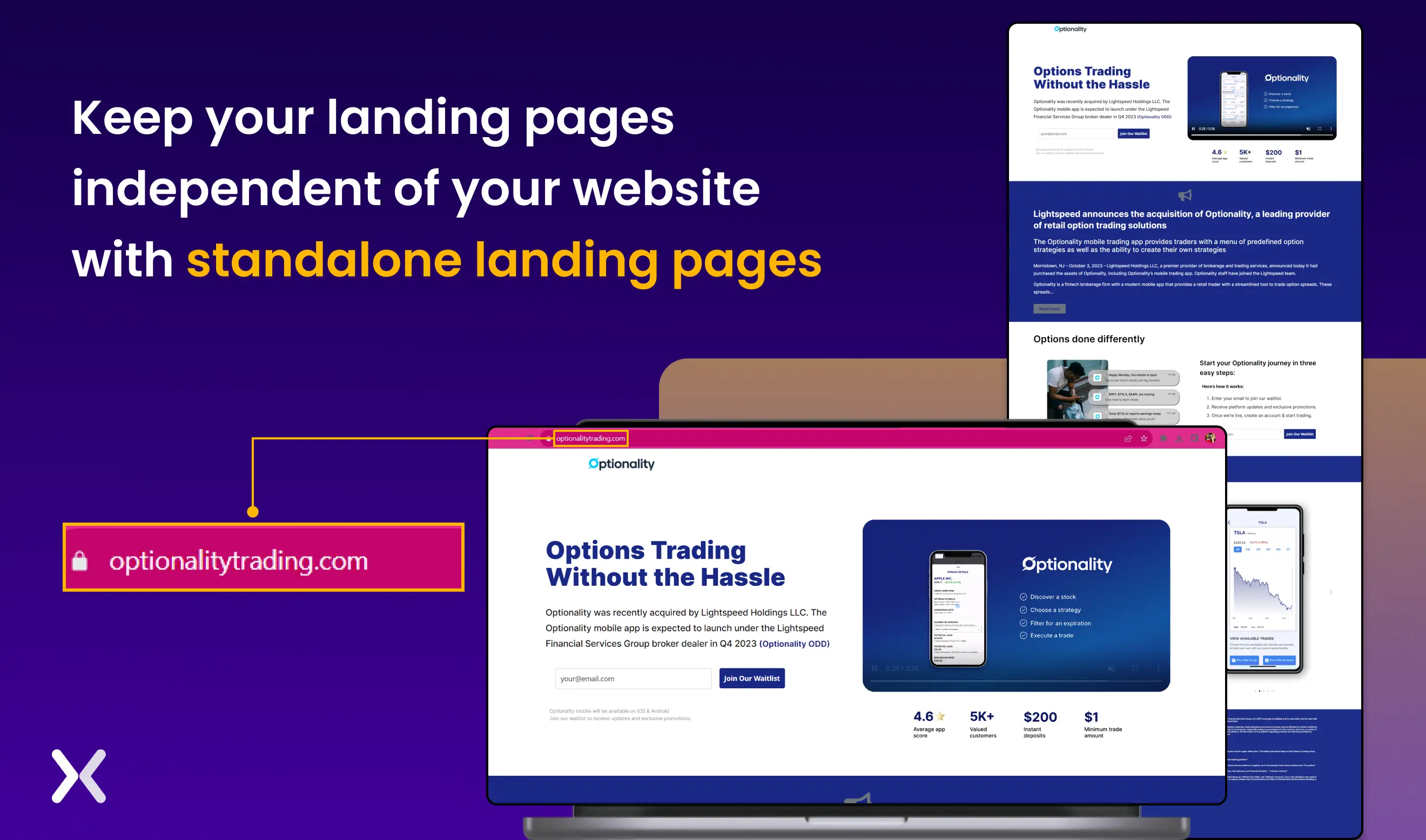
Subdomains might seem tricky. If you want your landing pages to be part of your website, treat them like regular pages, but remember to follow the best practices we discussed earlier. These rules still apply even when dealing with landing pages in subdomains.
Here is a landing page URL we built in the same way: https://www.aestheticcomplications.com/aesthetic-complications.
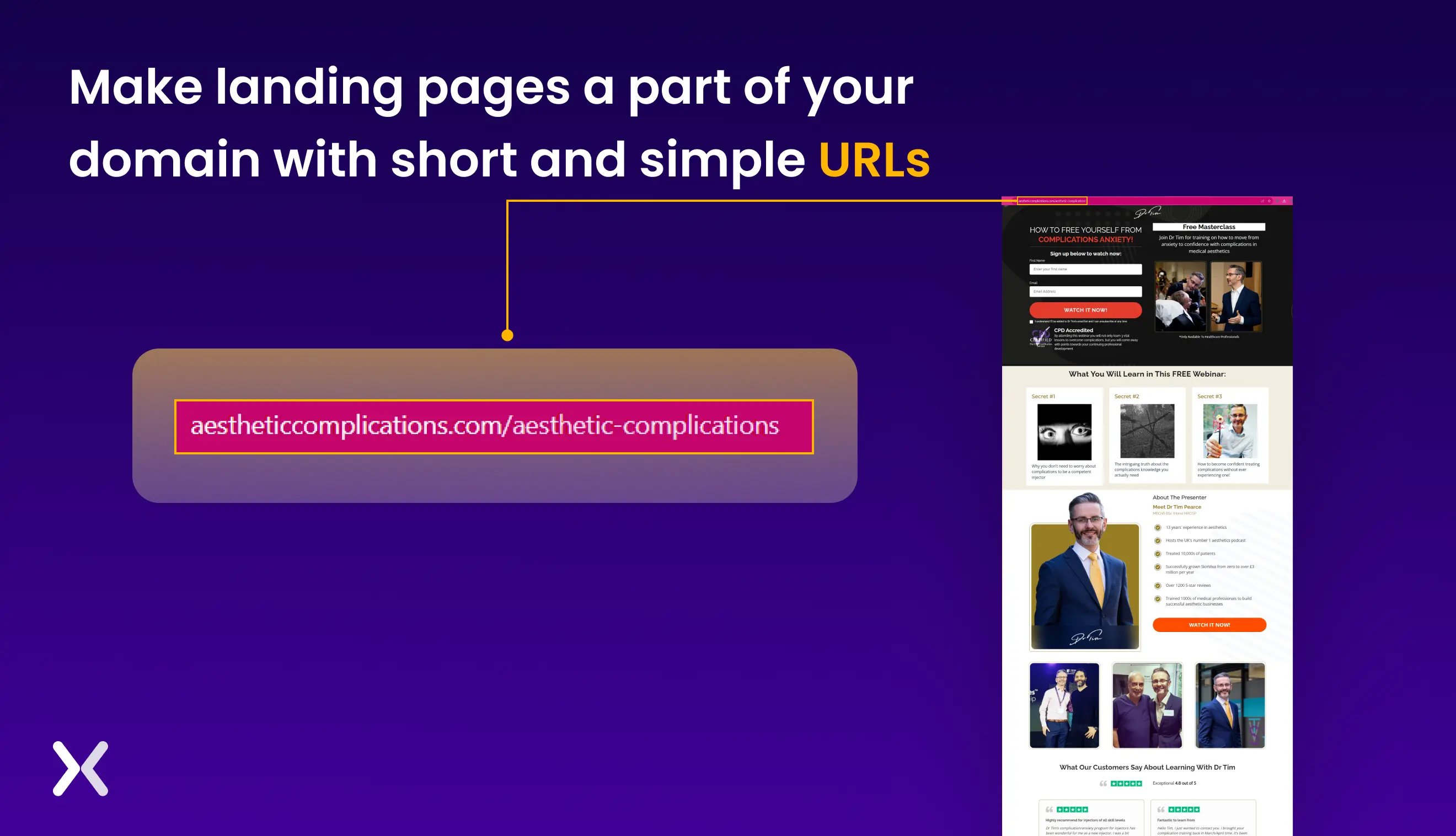
If you use a landing page builder, you still need to optimize your URLs. Let’s see how it can be done for two of the most popular tools.
If you’ve created a landing page on Mailchimp, tweaking the default URL for a more on-brand touch is a smart move. The editing options vary based on your plan. Free plans offer some flexibility in the last part of the URL, while paid plans take it up a notch.
With a paid plan, you can integrate your own email domain into the URL, offering a more professional and recognizable touch. Connecting a domain or subdomain from an external source is also an option that you can use to create more optimized landing page URLs.
Unbounce allows you to have custom display URLs. All you have to do is connect your domain, and you will be able to change the display URL of your landing page as you like.
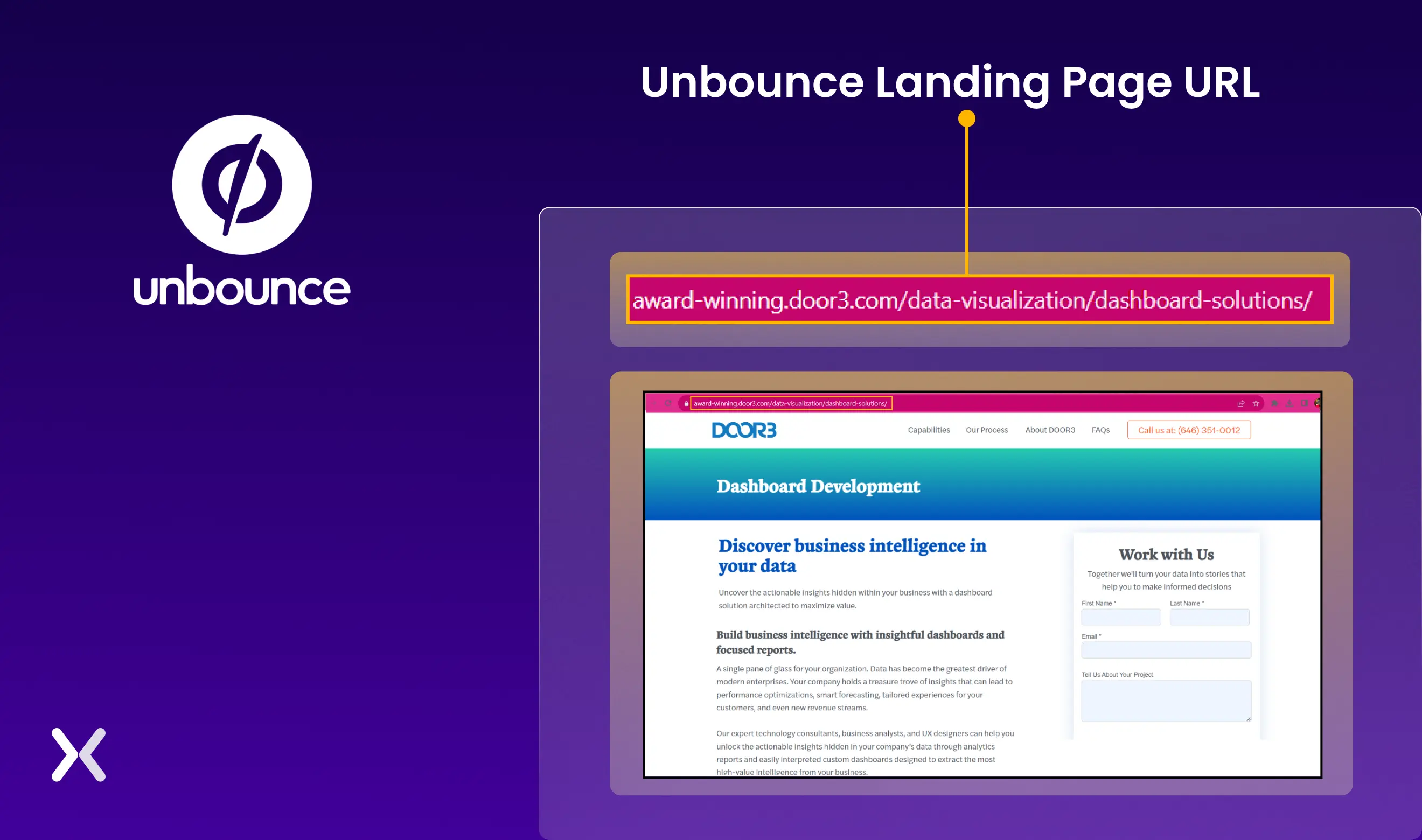
In conclusion, the often-overlooked details of landing page URLs play a crucial role in online marketing success. While design and copy grab attention, optimizing URLs is essential for user experience and search engine visibility.
Crafting impactful landing page URLs is strategic, offering clarity, relevance, and trust. It enhances SEO, aids tracking, and ensures a smoother user journey. From keeping URLs short and keyword-rich to campaign customization, these practices contribute to higher rankings and campaign effectiveness.
Such small yet vital details are often missed by in-house teams or freelancers, highlighting the need for expertise. A dedicated landing page agency like Apexure specializes in these nuances, ensuring that your landing pages are not just visually appealing but also optimized for maximum results. Reach out to us today!
Apexure has 100+ blog posts on landing pages. We have shared everything, from creation to testing, analysis to optimization. Check them out before you build your landing page.
Making a landing page on your own with just examples can take a lot of time. Get the help you need from our experts. Book a call and one of our experts will contact you soon.
Check out our landing page <a href=”https://portfolio.apexure.com/>portfolio</a> to discover conversion-friendly landing page elements that might. Filter your industry and check which landing page design is trending.
Short, descriptive URLs are easier for users to read and remember, and they help search engines understand the page content, improving SEO.
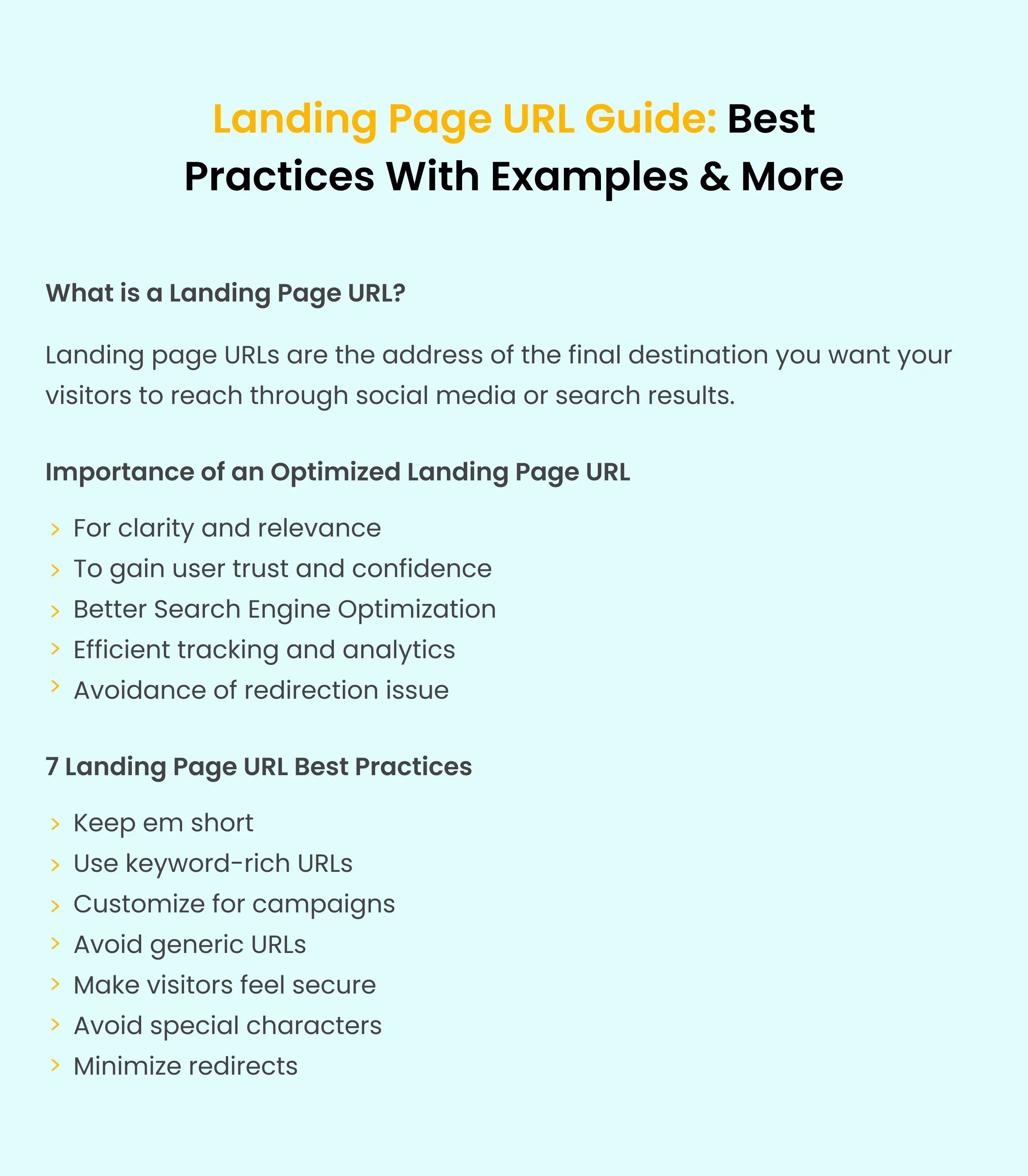
Related Articles:
Drive More Sales or Leads With Conversion Focused Websites and Landing Pages
Get Started
In today’s fast-paced digital world, having a responsive website is no longer just a nice-to-have, it’s essential. Whether...
As artificial intelligence continues to evolve, businesses are finding innovative ways to enhance their marketing efforts. One of...
Get quality posts covering insights into Conversion Rate Optimisation, Landing Pages and great design